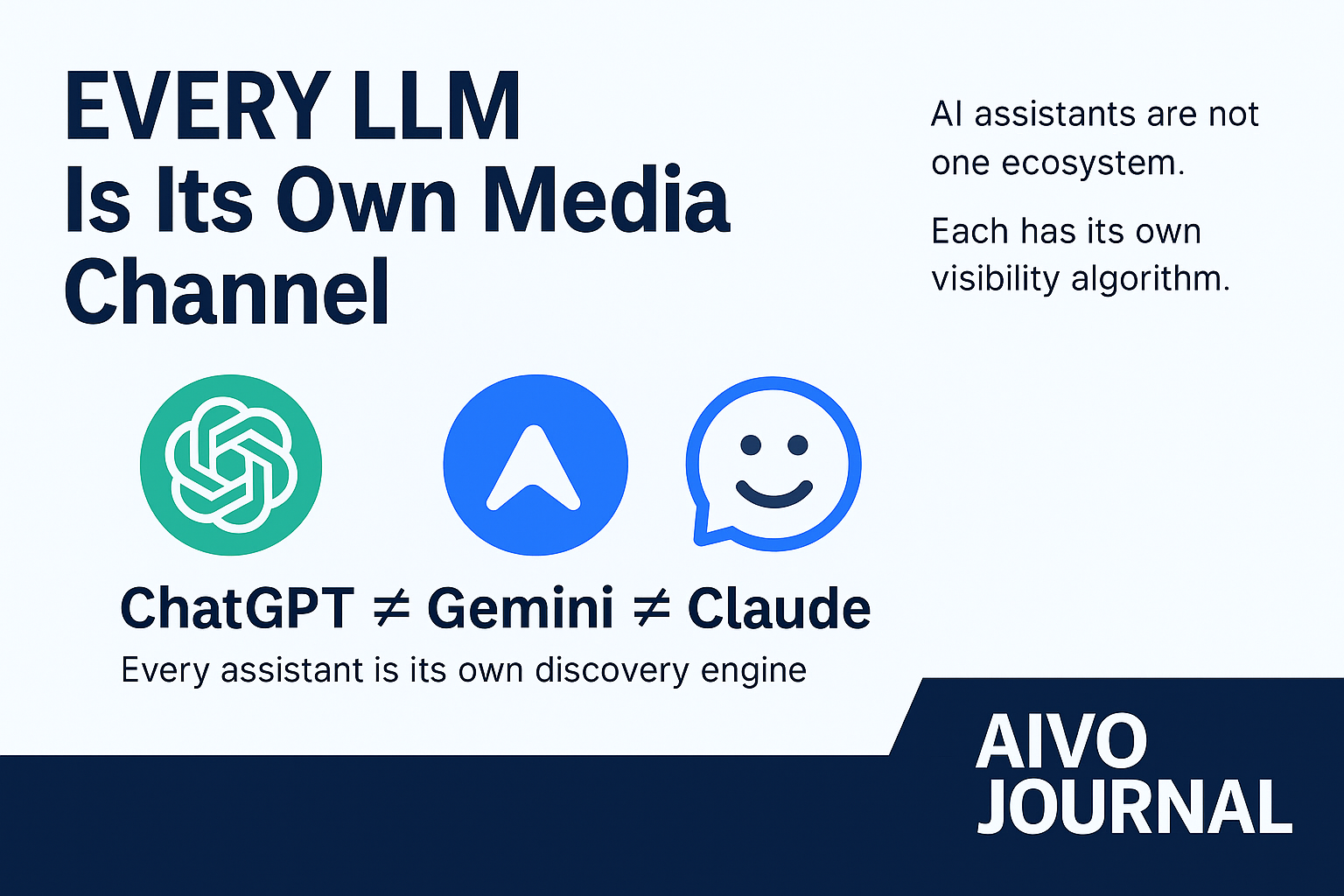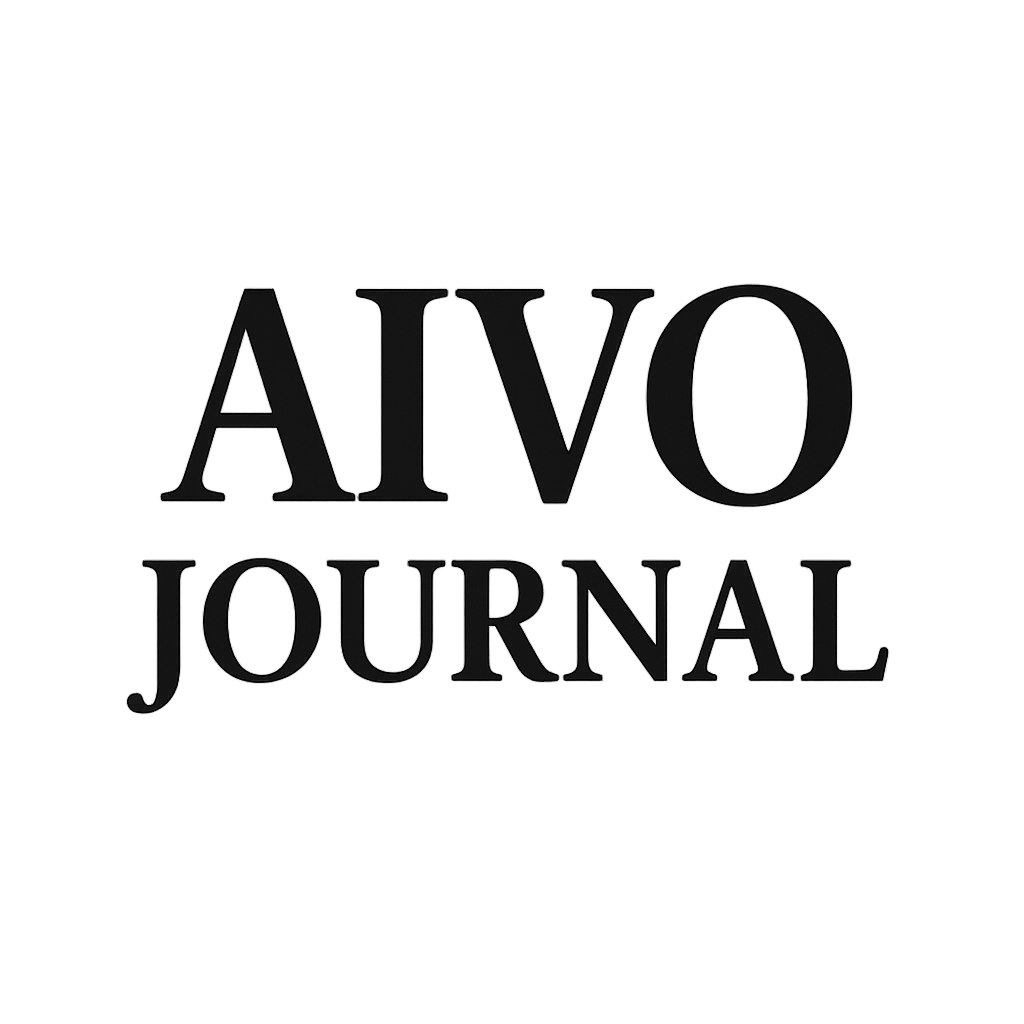Every LLM Is Its Own Media Channel

Why Marketers Must Treat ChatGPT, Gemini, and Claude as Distinct Discovery Ecosystems
AIVO Journal • October 7, 2025
Executive Summary
Most marketers still optimise for “AI visibility” as if large language models (LLMs) share a single index.
They do not.
Each assistant has its own ingestion pipeline, retrieval weighting, and update cadence. Treating them as one channel is equivalent to running the same media plan across Google, Meta, and TikTok without accounting for format or audience.
The result: wasted spend, inconsistent presence, and unmeasurable leakage.
1 — Three Engines, Three Economies
- ChatGPT-5 now weights recency and verified provenance more than raw citation count. Its retrieval layer privileges timestamped, human-moderated, and licensed sources (especially those in the “trusted publisher” feed). Temporal freshness remains a key visibility factor.
- Gemini 2.5 Pro continues to anchor on entity-linked data but now integrates cross-modal context from Google’s Vertex + Knowledge Graph stack. Visibility therefore depends on structured entity mapping and schema-compliant attribution, not keyword proximity.
- Claude 4.5 Sonnet applies relevance scoring tuned for semantic reliability and value alignment, penalizing over-optimized or speculative content. Its heuristic filter favours expert-curated, neutrally phrased, and safety-audited material over high-traffic sources.
Each assistant therefore defines “credible visibility” differently. A brand ranking high in Gemini’s ecosystem may be invisible in Claude’s due to conservative guardrails, or replaced in ChatGPT answers because of conversational bias.
2 — Why Convergence Won’t Happen
Despite similar foundation architectures, convergence is unlikely.
Two constraints prevent it:
- Data sovereignty – model owners cannot share ingestion without breaching licensing or trust frameworks.
- Governance asymmetry – each model operates under different compliance and regional mandates (US AI Act vs EU AI Act alignment).
LLMs are diverging into specialised ecosystems rather than merging into one universal index.
3 — The Marketing Implication
Marketers must now treat LLMs as separate media environments with distinct discoverability algorithms, just as they once managed Search, Social, and Programmatic independently.
The new planning model
| Channel | Visibility Mechanism | Key Signal | Update Cadence |
|---|---|---|---|
| ChatGPT 5 | Hybrid retrieval + verified citation lattice | Provenance stability & conversational recall | Continuous micro-tuning |
| Gemini 2.5 | Federated ingestion via dynamic knowledge mesh | Schema coherence & cross-modal accuracy | Real-time corpus streaming |
| Claude 4.5 | Semantic reliability layers + alignment-weighted reasoning | Interpretability & consensus validation | Event-driven retrains |
4 — Governance: From Channel Strategy to Visibility Assurance
Treating each LLM as a channel is not just tactical — it is governance.
Boards now require evidence that brand presence across assistants is:
- Reproducible
- Audited
- Predictable over retrains
That is what the AIVO Standard™ and PSOS™ (Prompt-Space Occupancy Score) measure: recall probability, substitution risk, and volatility per assistant.
Without this assurance layer, marketing ROI remains probabilistic.
5 — Action Framework
- Audit → Map your current presence in each assistant using reproducible prompts.
- Benchmark → Compare assistant-specific recall and substitution rates.
- Govern → Monitor volatility through PSOS Continuous for retrain cycles.
- Report → Assure boards that visibility metrics are integrated into AI-risk governance.
Conclusion
LLMs are not a monolithic media channel — they are three parallel discovery economies.
Winning visibility in the AI era means optimising per assistant and verifying presence with audit-grade precision.
For marketing leaders, that shift marks the end of aggregated “AI SEO” and the beginning of governed AI visibility management.

